The rise of microservices architecture reshaped how businesses approach designing, creating, and deploying software applications, offering unmatched scalability, flexibility, and agility.
In 2021, an astounding 85% of respondents from large organizations with 5000 or more employees confirmed their use of microservices.1 Recent reports indicate that roughly 82% of companies have already integrated microservices into their systems, with the remaining 18% planning to embrace this architecture soon.
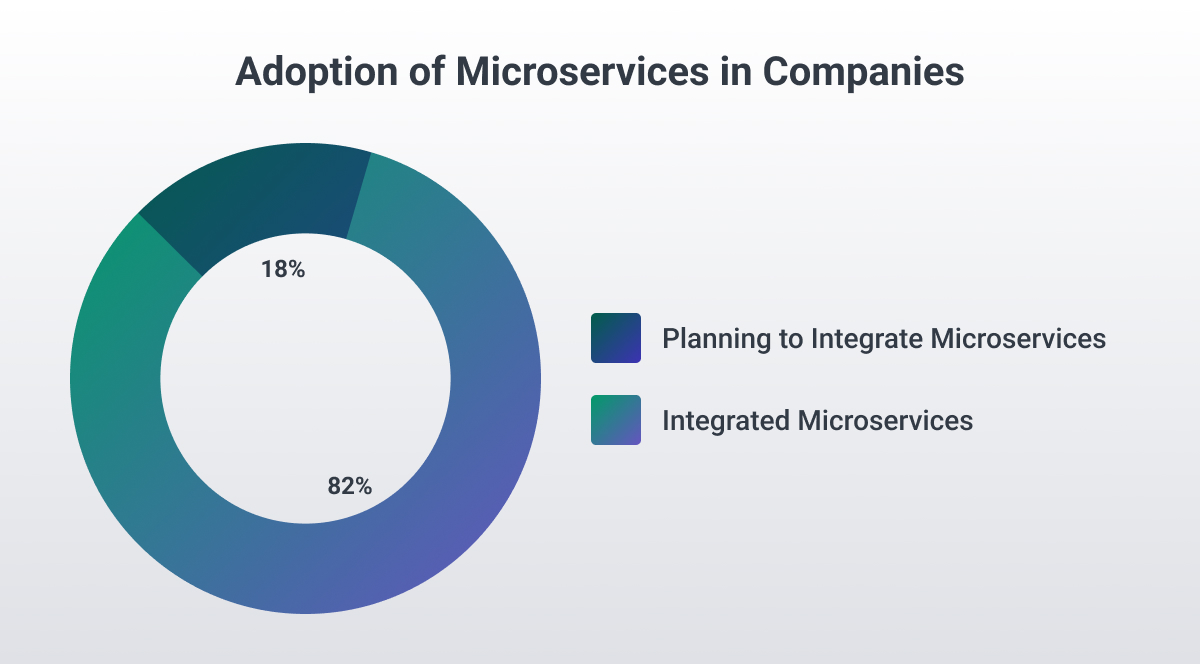
While agile methodologies have propelled team productivity and hastened code deployment, traditional software architecture often lags. Many systems remain intertwined in complex operations, while even well-designed setups often rely on a single code base and technology stack, operating within a shared memory space.
Enter microservices—an approach that promises to expedite and enhance software development. However, it's crucial to understand the tradeoffs of this approach before deciding to use microservices.
The pressing question: do microservices impact the bottom line? Exploring the nuanced pros and cons of microservices architecture, we delve into the strengths, limitations, use cases, and best practices of microservices architecture, assisting in evaluating its alignment with your business needs.
PICTURE
Understanding the Basics of Microservices Architecture
Microservices architecture breaks down complex applications into independent, specialized services communicating through clear APIs. Each service functions like an individual piece in a system, similar to ingredients in a recipe or components in machinery. They operate separately, allowing specific services to scale without impacting others, maintaining their size diversity.
Because these services deploy independently, integration isn't required before customer delivery. Upgrades become routine and less daunting, as each service can be updated autonomously.
For instance, in a prepaid card system, distinct microservices might manage account access using OAuth 2.0 authorization and transaction verification based on factors like geolocation or spending rules.
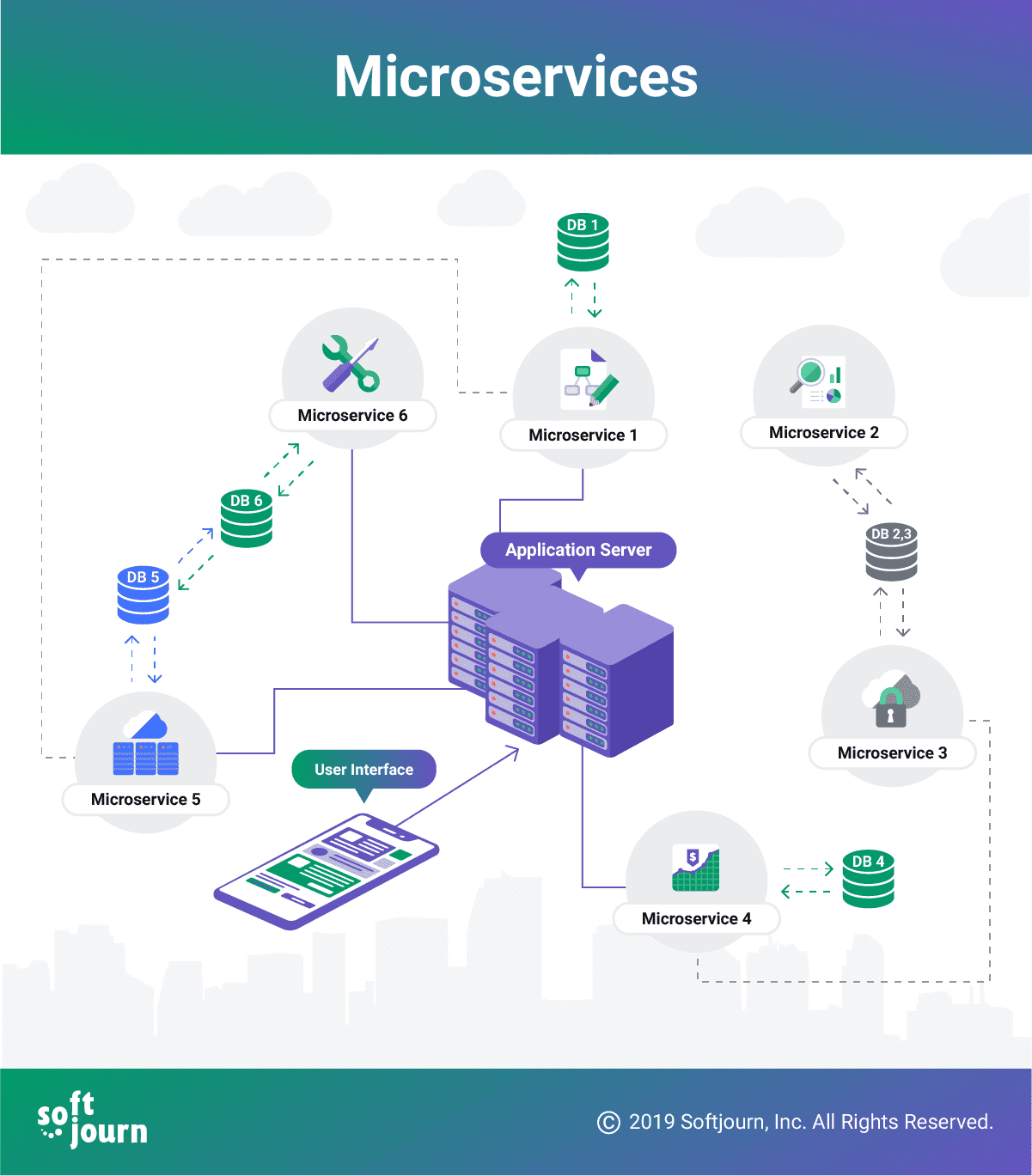
What Is Microservices Architecture?
Microservices architecture is a software development approach that structures an application as a collection of small, loosely coupled services or modules. In this approach, each service is responsible for performing a specific business function and can be developed, deployed, and managed independently.
Are microservice architectures a novel concept? While some argue that they echo Software-Oriented Architectures (SOA), existing for over a decade and rooted in prior architectural patterns and standards, others recognize the alluring benefits of the additional demands of microservice architectures. These requirements include the necessity for services to be independently deployable and accessible within distributed networks.
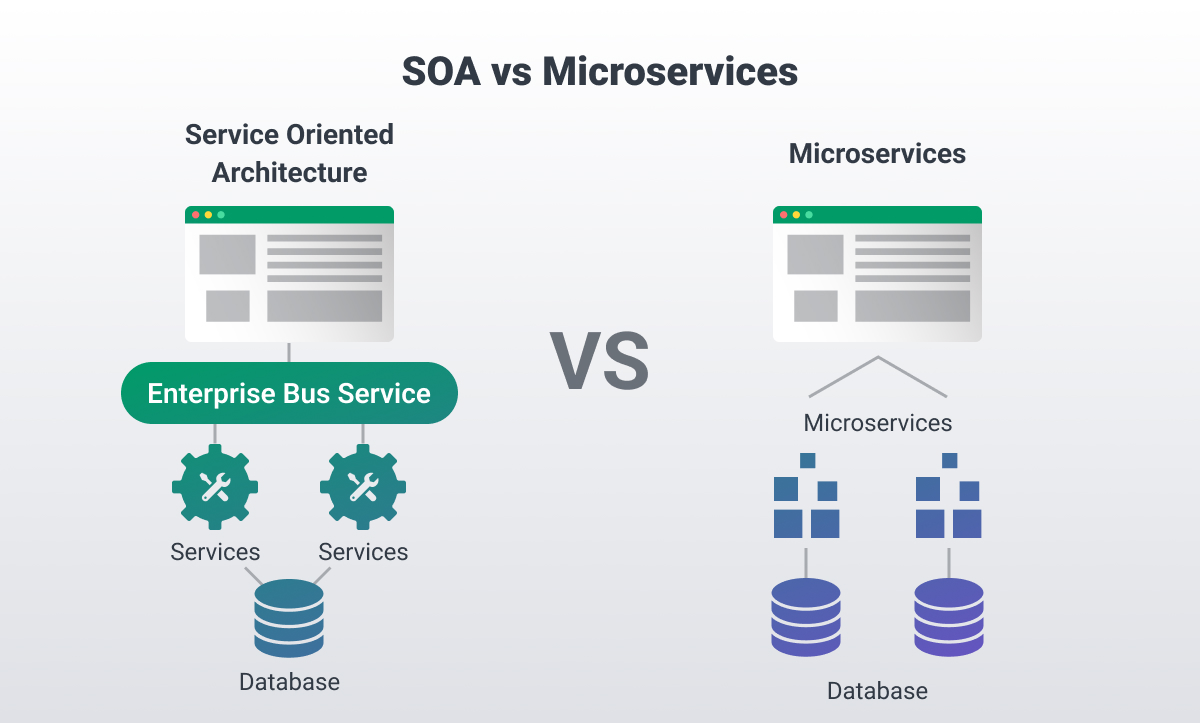
These services are built around specific capabilities like user authentication, payment processing, or inventory management. They communicate with each other through lightweight mechanisms, typically using APIs, allowing them to work together to fulfill a more extensive business goal.
Microservices architecture offers many advantages, such as promoting modularity and scalability, as services can be added, removed, or modified without affecting the entire system. It also allows for easy implementation of different technologies and programming languages for specific services.
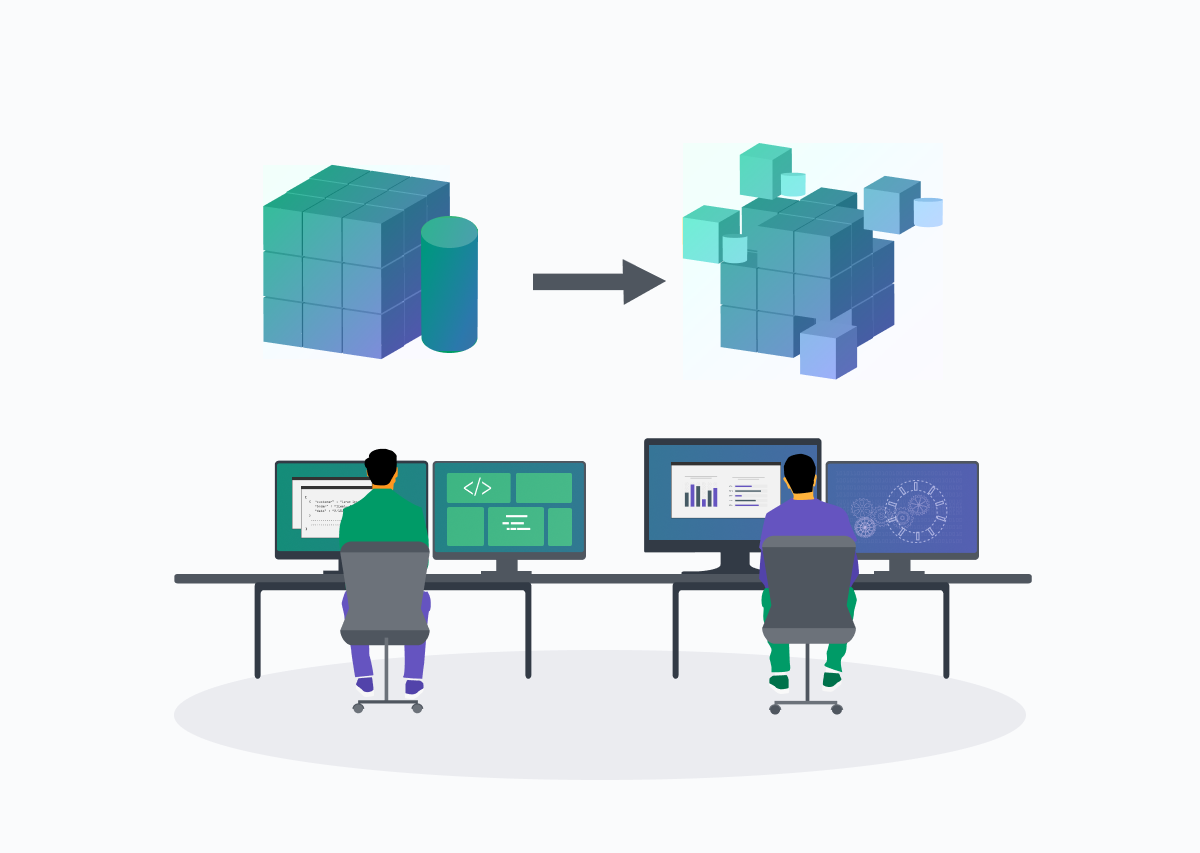
Comparison Between Microservices and Monolithic Architecture
Choosing between the traditional monolithic and the new-and-improved microservices architecture in software architecture determines the foundation for your digital goals. Monolith architecture setups prioritize cohesion and simplicity, integrating all aspects of an application tightly. While this streamlines development, it restricts scalability, adaptability, and technology diversity.
In contrast, microservices architecture decomposes complex applications into independent services, promoting autonomy and communication via defined APIs. This modularity grants unparalleled scalability, flexibility, and maintenance ease, allowing independent development and scaling for each service. However, it introduces complexities in management, coordination, and infrastructure that require careful attention.
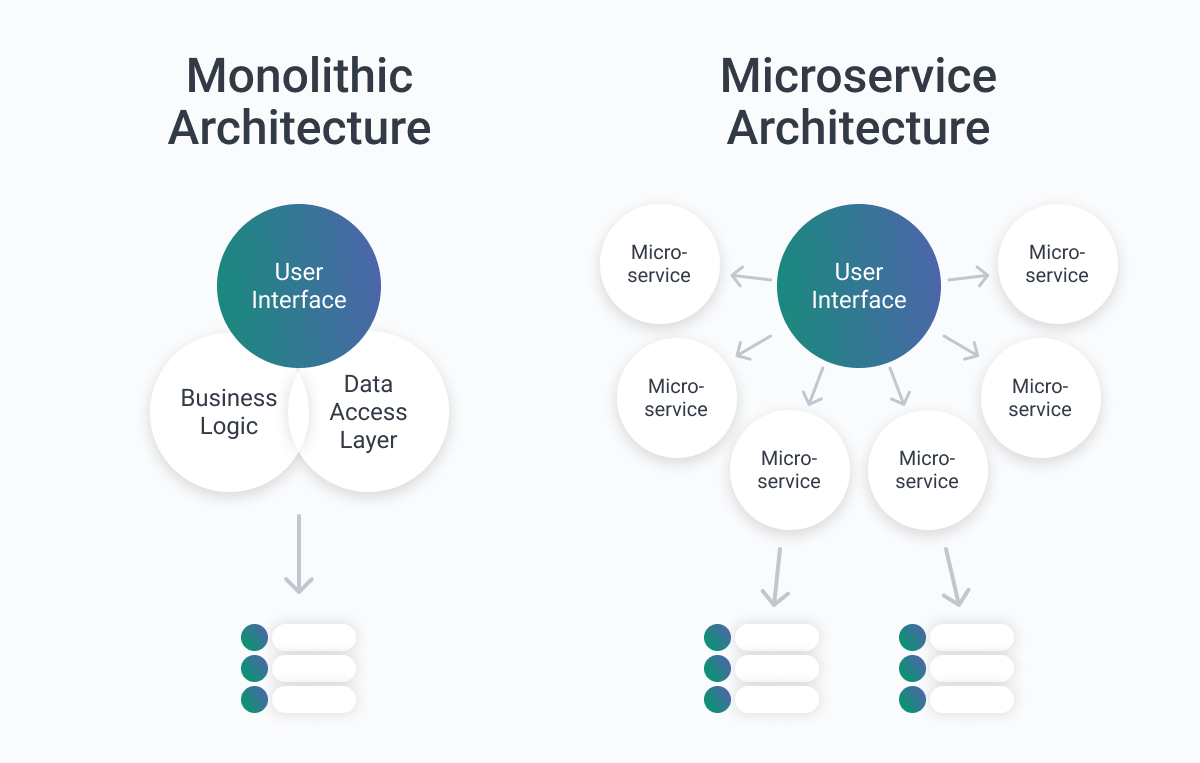
Benefits of Microservices Architecture
Microservices revolutionize software development by structuring applications into autonomous, specialized services. Each service handles distinct business functions and operates independently, a style gaining traction for its multitude of benefits. The benefits of a microservices architecture include:
-
Agility
- Developed and deployed separately, microservices allow swift modifications, updates, or replacements without system-wide impact. This facilitates the continuous delivery of features since microservices can be scaled without disrupting the whole system.
-
Technology Diversity and Innovation
- Unlike monolithic systems, microservices empower diverse technologies, languages, and frameworks for different services. This tailored approach fosters innovation, faster development cycles, and optimal tool selection for each service.
-
Team Autonomy and Specialization
- One of the biggest benefits of the microservices approach is that the architecture can be developed and managed separately by distinct teams, microservices promote autonomy, ownership, and accountability. Teams can iterate and enhance services independently, fostering improvement without centralized coordination.
-
Scalability and Flexibility
- Microservices excel in scalability and adaptability, enabling precise resource allocation, cost reduction, and efficient management of fluctuating workloads and user demands. Their flexibility in technology adoption empowers updates and evolution within services, fostering agility in development.
-
Improved Resiliency
- Microservices enhance fault isolation and system resilience by containing failures within specific services, preventing system-wide crashes seen in monolithic setups. This isolation ensures that even if one service fails, others operate independently, maintaining system functionality and resilience.
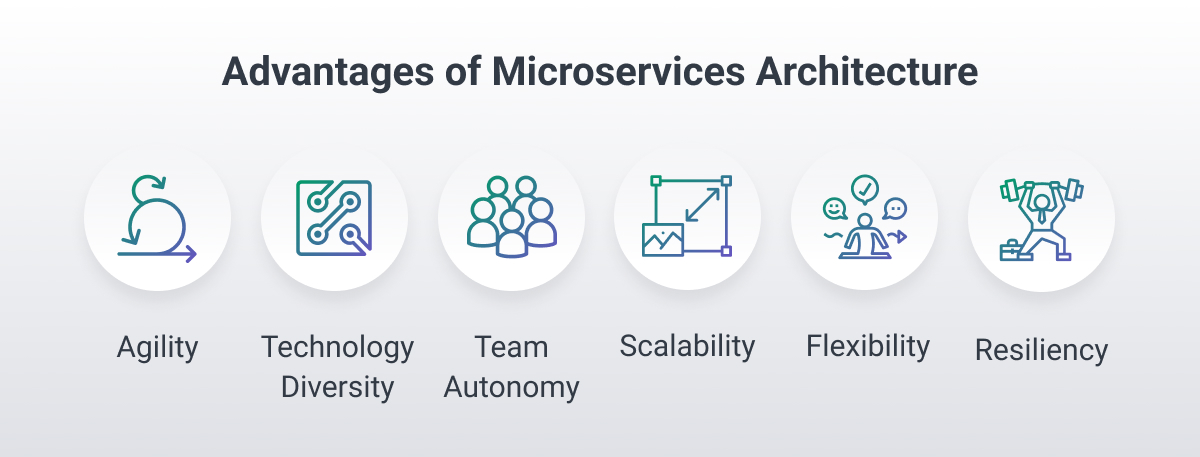
Disadvantages of Microservices Architecture
While the number of advantages of a microservices architecture is many - scalability, flexibility, and accelerated development - there are also disadvantages of microservices that should be considered.
-
Increased Complexity and Management Overhead
- In contrast to monolithic setups, microservices introduce complexity by running each component as a separate service. Managing and coordinating multiple service instances pose challenges in monitoring, testing, and troubleshooting. Heavy reliance on network communication heightens the risk of latency and failures, impacting system performance and availability.
-
Higher Expertise Requirement
- Developing with microservices demands expertise in diverse programming languages, frameworks, distributed systems, and network protocols. This steep learning curve and intricate development process necessitate a high level of skill, potentially complicating the project.
-
Resource Intensiveness
- Each service consumes memory, storage, and processing power, leading to increased resource demands. As the number of services and instances grows, infrastructure costs escalate, alongside added effort in deploying, maintaining, and updating each service separately.
Considering the advantages of microservices architecture, these challenges — increased complexity, skill demands, and resource intensiveness — require thoughtful consideration before adopting this approach for a project.
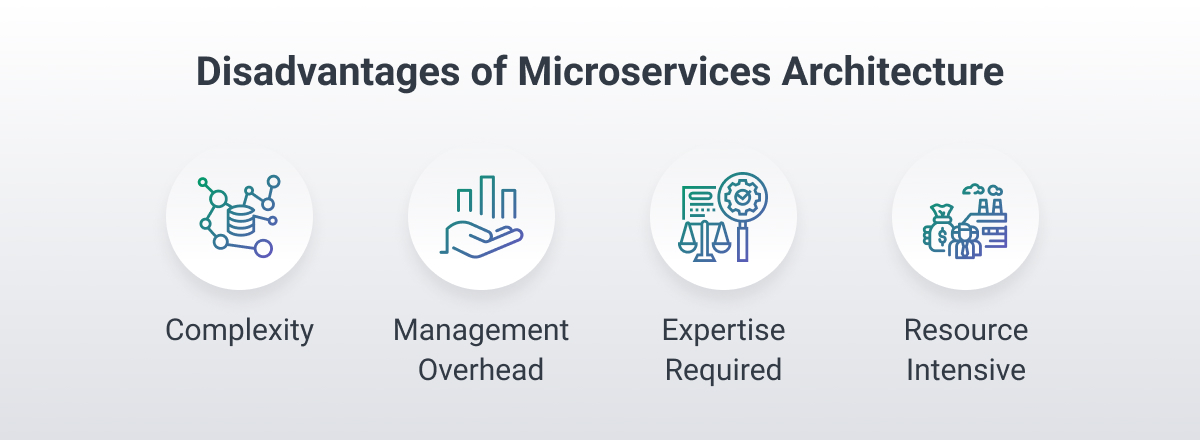
Use Cases for Implementing Microservice Architecture
When to Use Microservices Architecture?
Microservices architecture offers a framework that divides an application into small, independent services, but when is it the right fit? Here are key scenarios where this architecture excels:
-
Scalability Needs
- When scalability is essential and different application components demand independent scaling, the modular design or microservices architecture allows specific services to scale without affecting the entire application.
-
Frequent Updates and Flexibility
- For applications requiring regular updates or rapidly changing business logic, microservices enable independent deployment and updates, ensuring seamless changes without disrupting other system elements.
-
Complexity and Multifaceted Teams
- In complex applications involving multiple teams or diverse technologies, microservices simplify maintenance and development. Different groups can work on varied services using suitable technologies, enhancing manageability.
-
Application Evolution
- Applications expecting continual evolution benefit from microservices' small, focused services. These services facilitate easier changes and feature additions without compromising the entire application.
-
Fault Isolation and Resilience
- Microservices shine in environments where fault tolerance is crucial. If one service fails, the rest can continue operating independently, mitigating the impact of failures on the overall system.
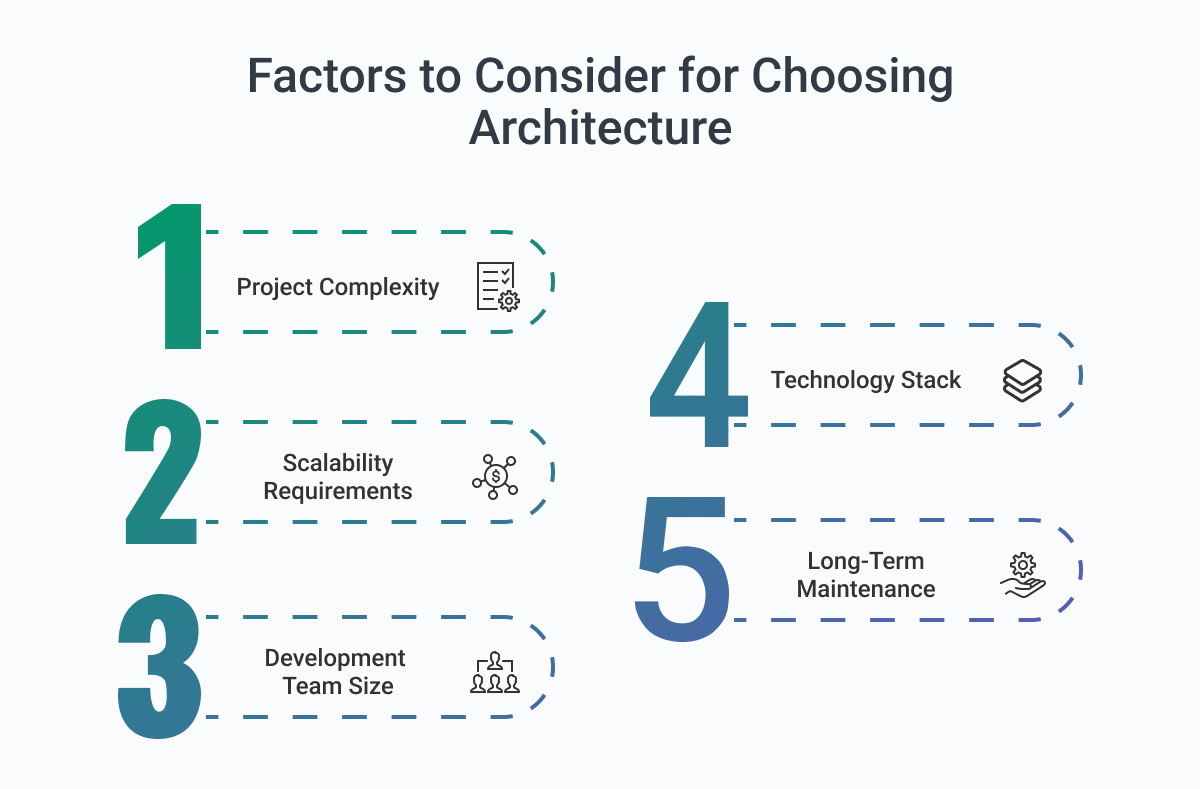
What Business Types Should Consider Microservices?
Microservices hold enormous potential for changing the enterprise application ground rules. Decomposing an application into independent services grants developers the freedom to operate relatively independently, with minimal worry about interfering with each other, since there is less of a concern that architectural decisions made for one area of the project will negatively impact other areas. This is partly because microservices allow your team to use different technology stacks for various aspects of the product.
This architecture style is well-suited for complex, large-scale applications that require agility, resilience, and fast deployment. Breaking down an application into small services enables DevOps and development teams to work on different components in parallel, fostering a quicker development cycle and better overall system reliability.
Exploring Use Cases of Microservices
There are many successful implementations of microservices across various industries. By breaking down complex applications into more minor, independent services, organizations can achieve greater flexibility and efficiency in developing and deploying their software systems. Here are three popular companies that did just that.

Netflix: A Distributed System Leads to Flexibility
The streaming giant has scaled its application to support millions of users using a microservices architecture. Each component of Netflix's platform, such as search, recommendation, and playback, is built and deployed as an independent microservice. This approach allows for increased flexibility in development and deployment, as each team can work independently on their respective microservice without impacting others.
Amazon: Faster Delivery Through Microservices Solutions
The most popular e-commerce company has effectively implemented microservices to power its highly scalable and reliable system. Amazon uses microservices to handle different functionalities, such as customer accounts, order processing, and inventory management. This approach allows Amazon to continuously deliver new features and enhancements to its platform without compromising the stability of its core services.
Uber: Modular Architecture is the Key to Rapid Scaling
Uber's platform is built on several microservices that handle various tasks, such as ride requests, driver matching, and payment processing. This microservices architecture enables Uber to rapidly scale its infrastructure while maintaining a seamless user experience.
Best Practices and Considerations in Microservices Implementation
Breaking Down Monolithic Architecture
Breaking down monolithic architecture involves dividing an extensive application into manageable microservices. While monolithic architectures were prevalent, their complexity makes development and maintenance challenging as applications grow.
Microservices offer scalability, flexibility, and fault tolerance by allowing independent development and deployment, facilitating parallel teamwork. Despite their focused functionalities and reusability, challenges like inter-service communication and data consistency arise.
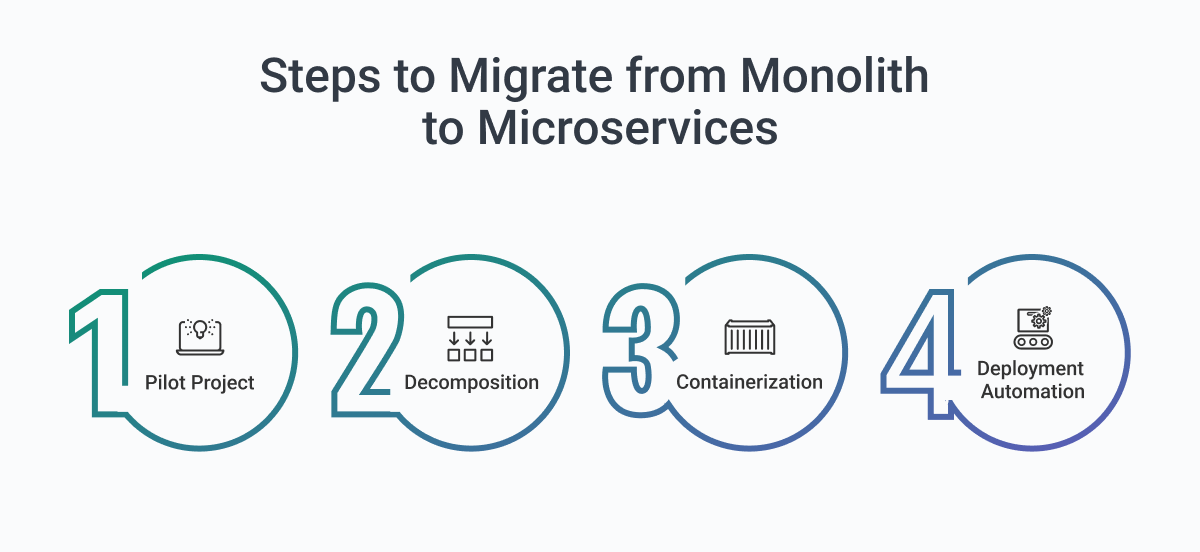
Deployment and Scaling Considerations
Deployment involves making the application available, while scaling ensures it handles increased users and data. Choosing an appropriate deployment strategy—on-premises, cloud-based, or hybrid—is crucial, aligning with performance, security, and cost requirements.
Scaling involves assessing architecture, identifying bottlenecks, and implementing load balancing and caching techniques. Continuous monitoring and performance testing are vital for consistent application performance and improvement opportunities.
Monitoring and Troubleshooting
Monitoring involves ongoing supervision of network devices and systems to detect issues and ensure smooth operation. It includes observing network traffic, system performance, and security events to address potential problems proactively.
Troubleshooting, on the other hand, requires systematic analysis using diagnostic tools to isolate and resolve hardware, software, or configuration issues. Proficient troubleshooting and regular monitoring are key to network reliability and performance.

Building Individual Microservices
What's involved in building an individual microservice? Here are four challenges that your team will need to confront before the new behavior can take its place in your system's architecture:
Developing individual microservices involves addressing specific challenges before integrating new behavior into your system's architecture:
-
Defining Service Boundaries:
- Microservices' independence from a user's perspective requires clear delineation of functions, challenging developers transitioning from monolithic applications. While migrating to microservices offers significant improvements—enhanced application structure, stability, supportability, maintenance, scalability, and performance—it demands continuous improvement and flexibility.
-
API Definition:
- Exposing scoped functionalities as APIs necessitates careful definition, as these APIs form a contract between services. Balancing the required information within APIs reduces dependencies and coupling between services. Tools like Swagger aid in API definition and documentation, ensuring consistency.
-
Service Scaling Requirements:
- Specifying service requirements, including availability, throughput, and latency, demands meticulous consideration, sometimes detailed in service level agreements (SLAs). Evaluating demands across distributed networks aids in resource allocation and understanding technology stack needs.
-
Implementation and Testing:
- Developing and testing microservices requires coding and testing as with any application. Clear definitions within microservices streamline development and testing, enabling independent service operation.
For Developers: Installing a Supporting Infrastructure
Building individual microservices is only part of the challenge; integrating them into a cohesive infrastructure poses further complexities:
-
Configuration Management:
- Managing dependencies among services via configuration settings and version control—like Spring Cloud Config—facilitates agile updates and management in microservices architecture.
-
Authentication:
- Ensuring robust security across services, platforms like Oauth or Netflix Zuul offer consistent security measures for individual microservices without relying on developers to handle security from scratch.
-
Routing:
- Services with multiple instances require a centralized routing mechanism like Spring Cloud Eureka to direct service calls efficiently and uniformly across instances.
-
Data Offloading:
- Facilitating failover and data resilience, mechanisms like shared databases among service models ensure uninterrupted operations even in the event of a service instance failure. Caching such databases enhances data access and overall application performance.
-
Logging and Consistency:
- Logging practices in a microservices setup shouldn't rely solely on individual service authors. Using frameworks like Spring Cloud Sleuth ensures consistent and structured logging. Netflix Zuul can enforce standardized logging practices, similar to the authorization framework mentioned earlier.
-
Monitoring Challenges:
- Managing a system within microservices architecture poses heightened complexity for IT departments compared to monolithic systems due to increased moving parts. The interactions between services and their individual loads become unpredictable. Addressing these challenges requires a holistic approach beyond individual service control.
-
Handling Service Failures:
- Microservices allow replacing failing components, but this isn't automatic. Netflix's Hystrix offers resilience through circuit breakers, redirecting a failing component's load to other areas. It incorporates monitoring mechanisms to identify and manage such scenarios, enhancing system reliability.
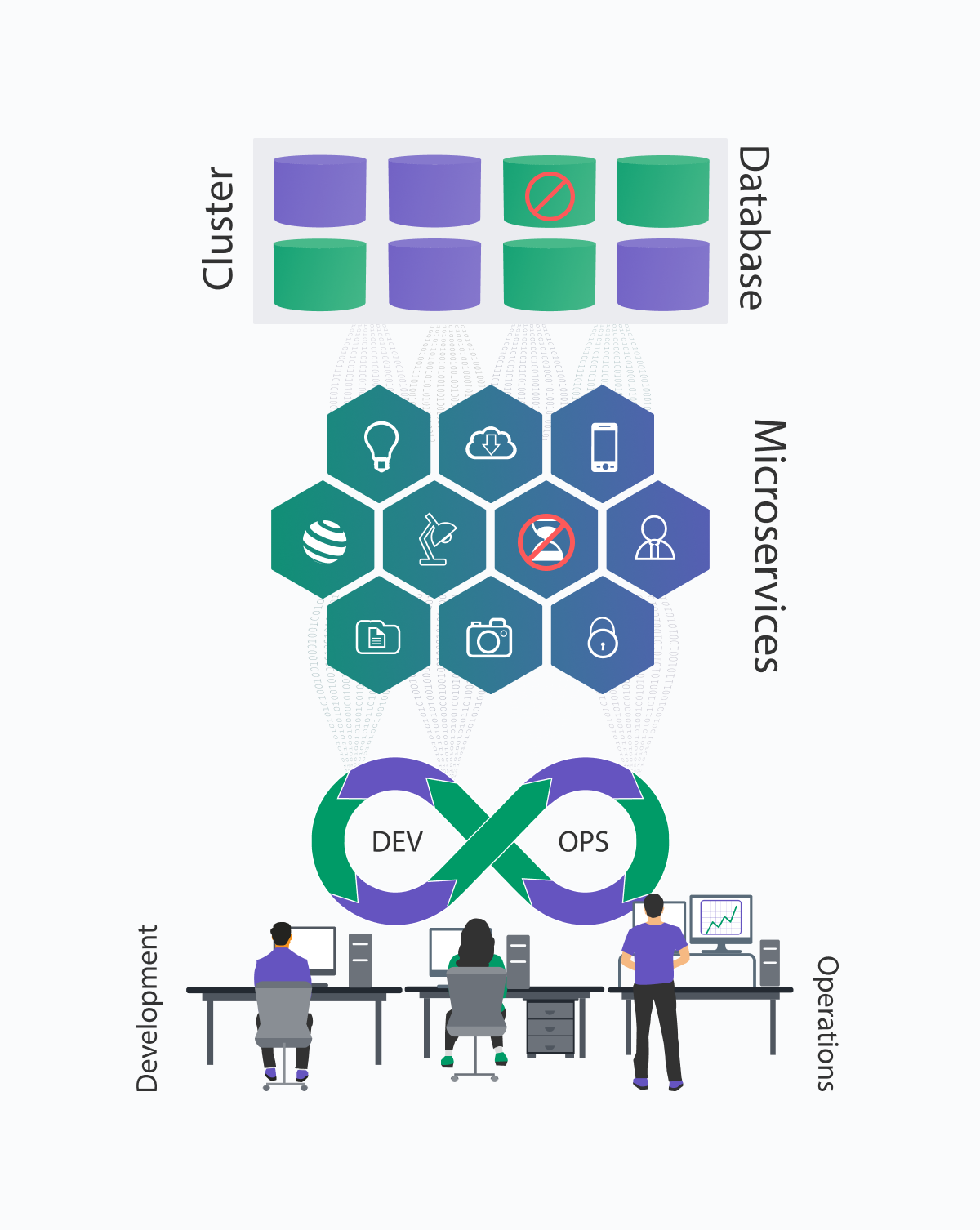
DevOps Approach in Microservices Architecture
Microservices share a close relationship with application programming interfaces (APIs), as APIs define specific microservices. The flexibility of these architectures, enabling diverse implementations, often leverages virtual machines or newer container technologies. The realm of DevOps focuses on empowering engineers to manage code deployment and instrumentation in production systems, providing particular advantages to projects utilizing microservices.
Implementing and managing microservices poses complexity owing to the decentralized structure. Each service demands its deployment and scaling approach. Vital technologies like Docker and orchestration platforms like Kubernetes have become imperative in overseeing microservices deployment.
For seamless and swift deployments, continuous integration and continuous delivery (CI/CD) pipelines are indispensable in the microservices realm. Additionally, this architecture promotes diverse technology adoption, allowing each service to utilize the best-fit tools and languages for its specific role.
Technology Stack Considerations for Microservices
For other architecture, like monolithic architecture, all components use the same technology stack. This limits your ability to choose different technologies or frameworks for different parts of the application, potentially hindering innovation.
However, for microservices architecture, technology choices are flexible, enabling the selection of the most suitable tools for each service's unique requirements. While offering these advantages, microservices introduce complexities regarding management, coordination, and infrastructure demands, which must be carefully addressed.

Future Trends and Innovations in Microservices Technology
Emerging trends and future innovations within microservices technology promise significant advancements in the realm of software development and IT. These trends predominantly aim to elevate fault tolerance levels while fostering technological innovation.
-
Customer Engagement Platforms: Major companies are innovating in the microservices architecture market, creating customer engagement platforms utilizing managed artificial intelligence and analytics services to enable smarter and faster decision-making processes3.
-
Service Mesh Technology: Rising in prominence, service mesh technology effectively manages communication, security, and observability within complex microservices architectures4.
-
Kubernetes Integration: The growing use of Kubernetes for automating and overseeing microservices deployment, scaling, and monitoring highlights its pivotal role in the microservices ecosystem5.
-
AI and Microservices Fusion (AIOps): The convergence of AI and microservices in AIOps trends promises enhanced operational efficiency and refined decision-making processes6.
-
Effective API Management: Seamless communication and integration between microservices hinge on efficient API management.
-
Serverless Architecture Integration: The merging of serverless architecture with microservices gains popularity, streamlining resource allocation and enabling developers to focus solely on code development7.
-
Cloud Deployment: Increasingly, microservices find deployment in cloud environments, capitalizing on the scalability and flexibility offered by cloud platforms.
Conclusion
Microservice architectures unveil a spectrum of advantages and drawbacks. As the number of microservices expands, challenges shift from preventing conflicts during collaborative projects to navigating and amalgamating numerous services for effective operations.
For instance, the flexibility that lets diverse teams design databases poses hurdles when conducting comprehensive data analyses.
However, amidst these challenges, the substantial merits of this approach mustn't be overlooked. Microservices facilitate a seamless transition toward a more agile and resilient enterprise, marking a pivotal aspect to consider in the construction of modern systems.








